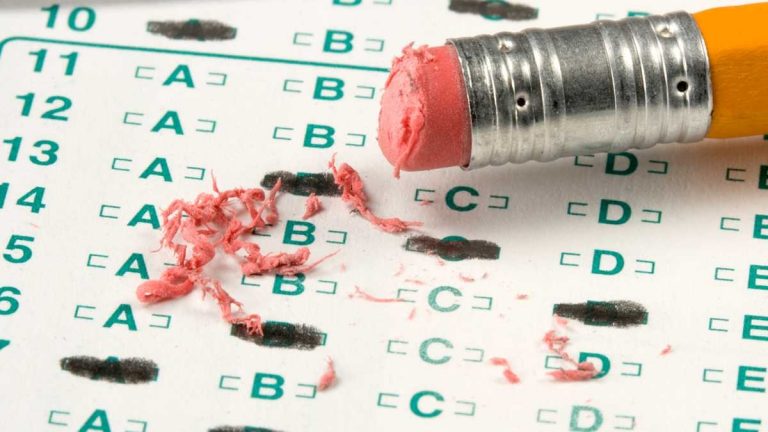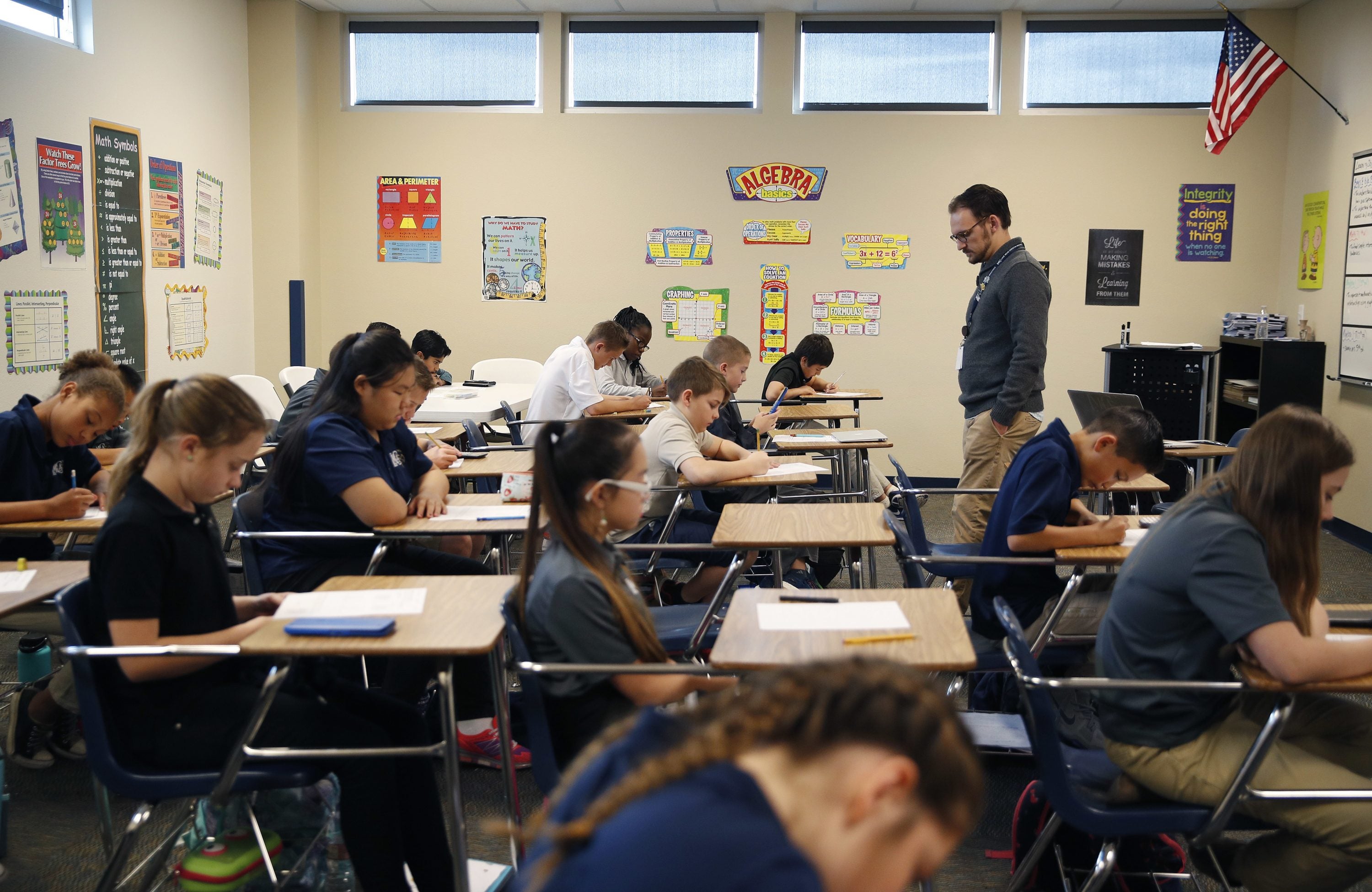Philly’s youngest learners show reading growth, but math scores flat
Philadelphia's youngest public school students made notable gains in reading last year, according to state test scores released Wednesday.

Close-up of a standardized test. (Bigstock)
Philadelphia’s youngest public school students made notable gains in reading last year, according to state test scores released Wednesday.
Overall proficiency rates, however, didn’t move much, and the city results remain well below state averages.
The data comes from the math and English language arts PSSAs, which Pennsylvania students in grades three through eight take every spring. Scores are typically analyzed over the summer, reviewed and then released publicly in the fall.
The gains made in Philadelphia mark the first time district schools have shown real improvement on the new, tougher version of the PSSA. In 2015, state officials rejiggered the test to align it with the federal Common Core academic standards.
Scores plummeted in the first year of the new test — in Philadelphia and around the commonwealth. Last year, scores rebounded a bit, although Philly students didn’t improve at the same pace as the state average.
This year, evidence shows solid growth in reading, although math scores remain stubbornly low.
Philadelphia’s youngest students made the biggest reading gains. District leaders say that’s evidence their focus on early literacy is paying dividends.
“The results are clear, we are making progress as a school district, and our strategies and initiatives are building a strong foundation for academic success,” said superintendent William Hite in a statement.
Third-graders made the biggest reading leap. In 2016, 30 percent of district third-graders scored advanced or proficient. This year, 35 percent tested on grade level. Fourth-graders made the second-biggest gains, going from 28 percent advanced or proficient to 31 percent advanced or proficient.
The district has made early literacy one of its “anchor goals,” and it has targeted considerable resources toward better guiding kindergartners, first- and second-graders as they learn to read. The district has hired coaches to help early-learning teachers and redesigned classrooms to facilitate more small-group learning. Philadelphia also has a civic goal of ensuring all children are reading on grade level by fourth grade.
Though the results suggest some payoff, the data was less encouraging for older students.
Fifth-graders held steady in reading; sixth- and seventh-graders improved 1 percentage point each; and eighth-graders dropped 2 percentage points.
Overall, the rate of Philadelphia students who scored proficient or advanced on the English language arts PSSAs rose from 32 percent to 33 percent.
The math PSSA told a similar story. The number of Philadelphia public school students scoring proficient or advanced on that test went from 18 percent to 19 percent.
Those gains are about consistent with changes in the state average. Across Pennsylvania, English proficiency rates ticked up 1 percentage point and math proficiency rates rose 2 percentage points.
| Grade | Philly % Change (English) | Pa. % Change (English) |
| 3 | + 5% | +4% |
| 4 | + 3% | +2% |
| 5 | + 0% | -2% |
| 6 | + 1% | +2% |
| 7 | + 1% | -2% |
| 8 | – 2% | +1% |
| Grade | Philly % Change (Math) | Pa. % Change (Math) |
|---|---|---|
| 3 | +1% | +1% |
| 4 | +0% | +0% |
| 5 | +1% | +0% |
| 6 | +1% | -1% |
| 7 | +2% | +1% |
| 8 | +1% | +2% |
On the Keystone Exams — taken annually by Pennsylvania high school students — Philadelphia saw more substantial growth. And that growth came during a year when statewide averages dropped considerably.
Among Philadelphia students, proficiency rates climbed 2 percentage points on the algebra I exam; 6 percentage points on the biology exam; and 5 percentage points on the literature exam. This year’s growth follows similarly strong gains last year among Philadelphia students.
| Subject | Philly % Change | Pa. % Change |
| Algebra I | +2% | -3% |
| Biology | +6% | -2% |
| Literature | +5% | -4% |
WHYY is your source for fact-based, in-depth journalism and information. As a nonprofit organization, we rely on financial support from readers like you. Please give today.





